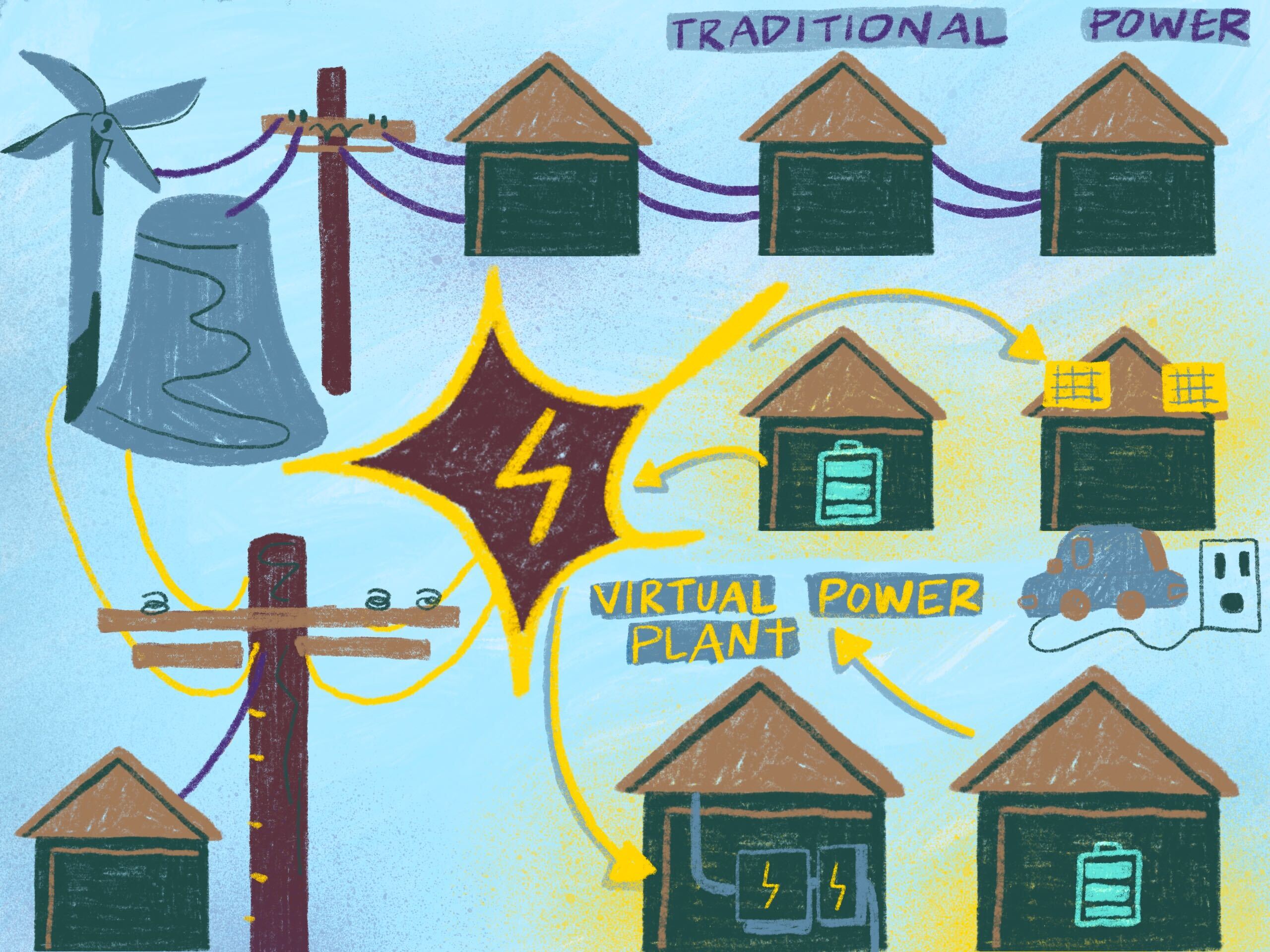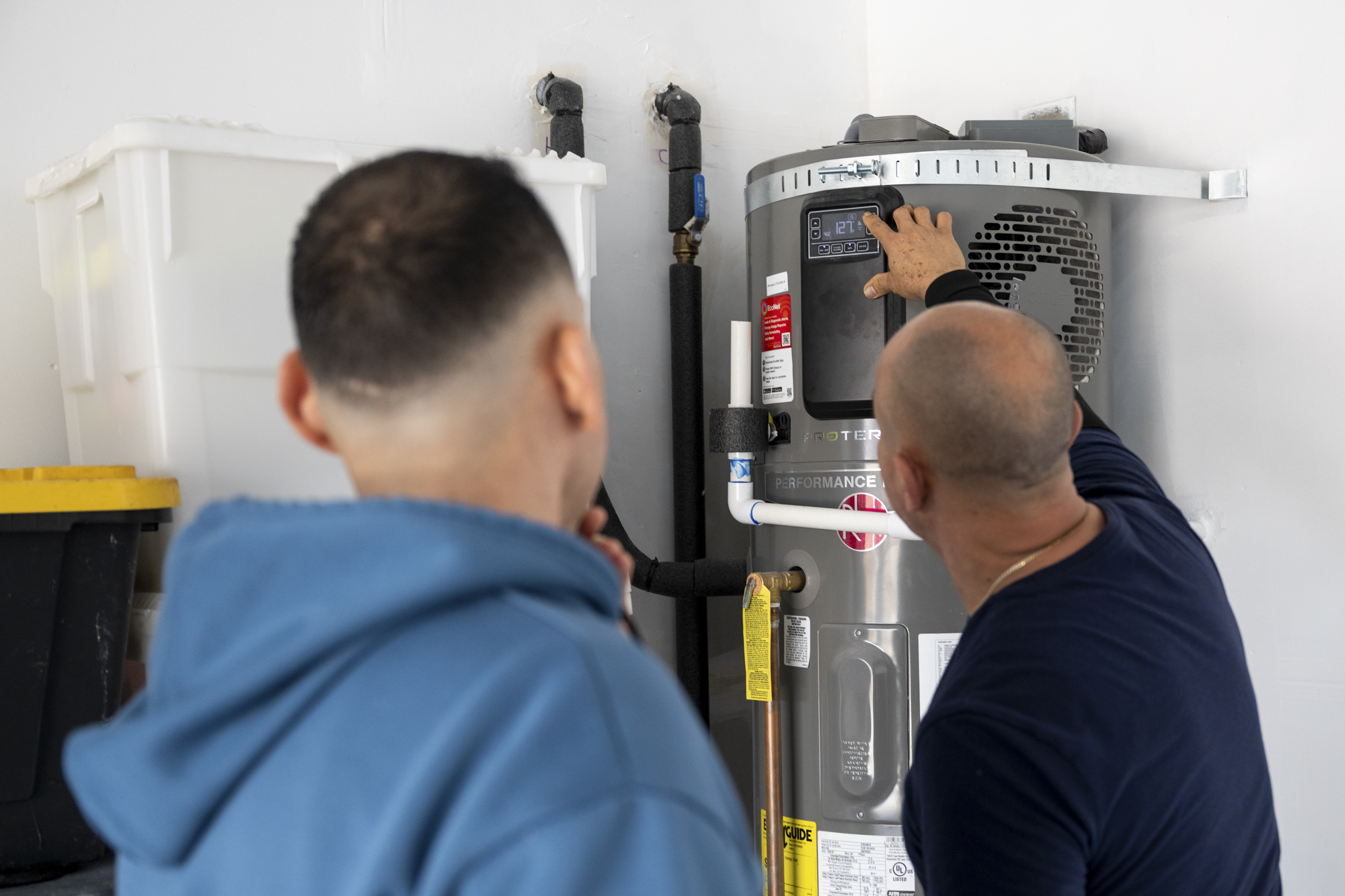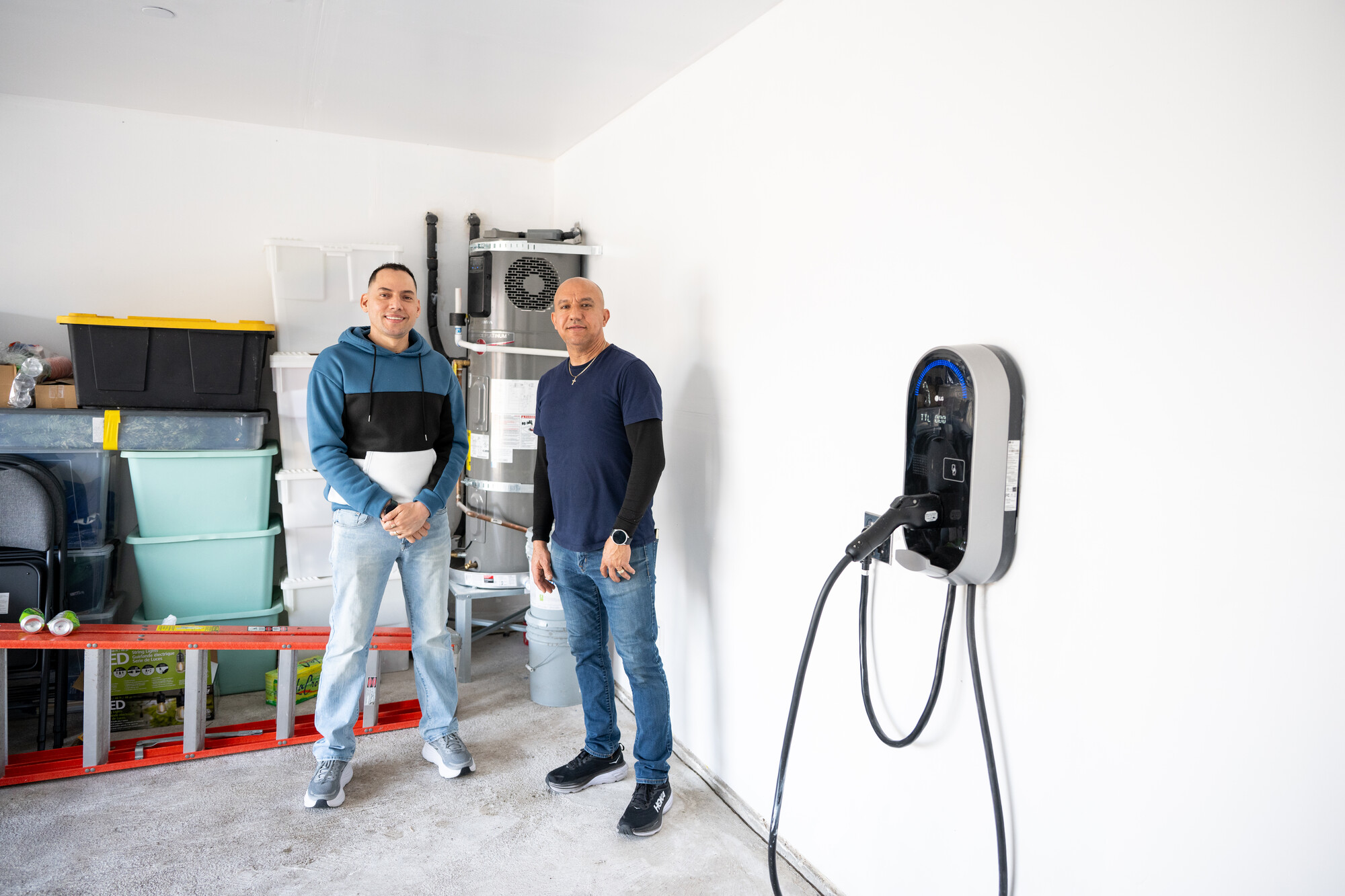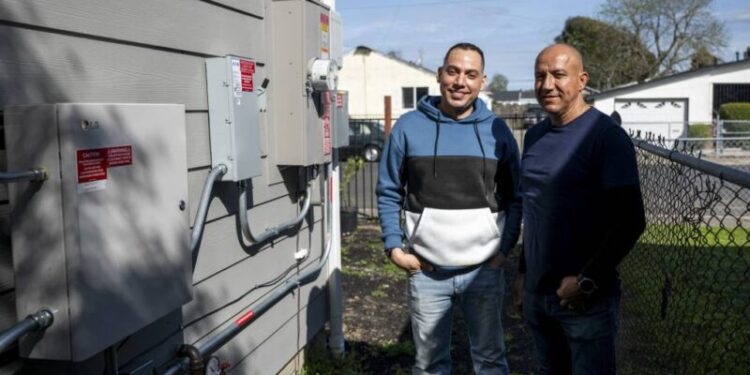But none of this was on the minds of Israel Amezcua, a hairstylist, and his husband, Ramon Heredia, when they toured the home they bought last summer. To Heredia, it was just “the most beautiful house in the area.”
“When I saw that this house had air conditioning, that was my number one,” said Heredia, who manages inventory at a manufacturing company. “I didn’t know we had solar panels, I didn’t know this was a carbon-free home, I didn’t understand any of that. All I knew was it had air conditioning, and I was going to sleep so comfortably.”
The couple also had no idea that dozens of scientists, housing advocates, energy professionals, and journalists — even Eduardo Martinez, Richmond’s mayor — pressed into the “home of the future” for a media event days before it went on the market.
A typical power plant might make you think of smoke stacks or Homer Simpson juggling a glowing tube of nuclear waste. A virtual power plant is mostly invisible, said Alexandra McGee, a vice president at MCE, a nonprofit energy provider serving Marin, Napa, Solano and Contra Costa counties.
“There’s these small pockets of power tucked into garages or basements or homes and businesses,” McGee said of the distributed appliances that make up the virtual power plant.
 Ramon Heredia makes mate in the kitchen of his all-electric home in Richmond on March 21, 2025. Heredia and his partner, Ivan Israel Amezcua, had to buy new cookware to use with the electric oven range. (Beth LaBerge/KQED)
Ramon Heredia makes mate in the kitchen of his all-electric home in Richmond on March 21, 2025. Heredia and his partner, Ivan Israel Amezcua, had to buy new cookware to use with the electric oven range. (Beth LaBerge/KQED)
California’s grid, abundant with solar power in the middle of the day, often experiences a strain between 4 p.m. and 9 p.m., as the sun sets and people return home from work and begin using their electric appliances. To compensate, energy providers can ramp up a gas-fired power plant.
However, a virtual power plant could relieve that evening power grid strain: backup batteries, fully charged from midday, could power not only the homes they are attached to but also others nearby.
While virtual power plants are still in their nascency, they could power roughly 1 million homes during times of peak energy use last year.
The volume could grow fivefold by 2035, saving ratepayers around $550 million each year, according to a report by research firm the Brattle Group. The extra power could prove significant, as California’s energy needs are anticipated to grow by close to 30% in the next decade.
State Assemblymembers John Harabedian, D-Pasadena, and Nick Schultz, D-Burbank, as well as state Sen. Josh Becker, D-Menlo Park, have introduced bills to help deploy virtual power plants.

MCE heads a pilot in Richmond, which includes the home of Israel Amezcua and Heredia.
It kicked off in 2024 and will be fully operational at the end of this year. The pilot includes roughly 100 homes with low-income residents and two businesses. For participating, residents earn up to $50 off of their monthly energy bills, and businesses can earn up to $350. In return, MCE software will communicate with and direct hundreds of appliances, including backup batteries and heat pump water heaters.
MCE is one of several community energy providers in California that generate or purchase power, using PG&E’s infrastructure to deliver it to customers. The virtual power plant cuts down on the costs of buying energy. MCE won state funding to build out the pilot for all the communities it serves over the next four years.
“It saves MCE money because we’re the ones who are procuring the energy to serve that customer load,” McGee said. “So if collectively we’re shifting everyone out of the more expensive times, then our contracts get cheaper and we can pass along those bill savings for the customers.”
PG&E spokesperson Paul Doherty said the utility has been using virtual power plant technology for roughly 15 years. He said the company has enough energy to power more than 500,000 homes at any given time.
 Ivan Israel Amezcua (left) and Ramon Heredia talk about their heating system in the garage of their all-electric home in Richmond on March 21, 2025. (Beth LaBerge/KQED)
Ivan Israel Amezcua (left) and Ramon Heredia talk about their heating system in the garage of their all-electric home in Richmond on March 21, 2025. (Beth LaBerge/KQED)
This year, PG&E and Sunrun, a San Francisco-based solar company, launched a project in the South Bay and Central Valley that harnesses more than a thousand residential backup batteries and smart panels to reduce strain on the grid. Smart panels connected to the internet allow people to manage how their homes use energy, such as prioritizing when certain appliances run, turn off or charge.
Apart from reducing the probability of outages and saving money, virtual power plants allow PG&E to “get more out of our existing infrastructure,” Doherty said.
If several people adopt new electric vehicles, heat pumps or other technologies in one neighborhood rather than upgrading wires and transformers to accommodate the need for more electricity, a virtual power plant can help balance energy demand. Software can help stagger when EVs charge, for example.
While some utilities have struggled to interest customers in virtual power plants, representatives of Sunrun think they know how to explain the technology and enroll people. Customers pay no upfront costs to install solar and batteries on their homes. Instead, they contribute a monthly payment. Sunrun manages the software that connects equipment and the logistics of being part of the virtual power plant.
Sunrun’s Chris Rauscher said their biggest dispatch this year was “enough to power the city of Santa Monica during the evening peak.”
 Ivan Israel Amezcua (left) and Ramon Heredia stand inside the garage of their all-electric home in Richmond on March 21, 2025. (Beth LaBerge/KQED)
Ivan Israel Amezcua (left) and Ramon Heredia stand inside the garage of their all-electric home in Richmond on March 21, 2025. (Beth LaBerge/KQED)
However, researchers warn that significant barriers, both technological and behavioral, stand in the way of growing virtual power plants.
“The scaling is really hard,” said Ram Rajagopal, professor of civil and environmental engineering at Stanford University, adding that virtual power plants are less reliable than natural gas generators.
While Israel Amezcua and Heredia moved into a home with gadgets ready to switch on, most people would need to upgrade their existing appliances and electric system to participate in a virtual power plant. Increasing the amount of electricity a panel can handle could cost thousands of dollars.
“Even if it is economically viable for you to adopt it, there’s so many barriers: financing and installation and the panel upgrades, utility approvals, going through all these hoops just demotivates people,” Rajagopal said.


















